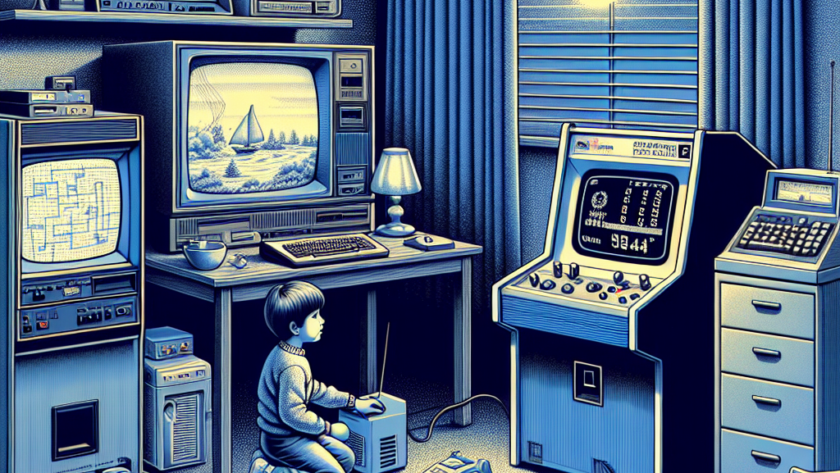Cathode Ray Tubes (CRTs) are a technology that dominated the 20th century, vastly influencing television, computing, and scientific monitoring devices. Despite being largely overtaken by modern technologies like LCD and LED screens, CRTs played a foundational role in the development and evolution of electronic displays.
Overview of Cathode Ray Tubes (CRTs)
CRTs work by emitting electrons from a cathode, which then strike a phosphorescent screen, creating visible images. These tubes were pivotal in various industries due to their capacity for high resolution, accuracy, and cost-efficiency during their peak years.
Key Features of CRTs:
- High Resolution: Capable of displaying fine details.
- Durability: Robust build making them long-lasting.
- Color Accuracy: Excellent color reproduction capabilities.
- Cost-effective: Affordable manufacturing during their prime.
Common Uses of CRTs
The versatility of CRTs allowed them to be utilized across multiple sectors:
Television Sets
The most widespread use of CRT technology was in television sets. For several decades, CRT TVs were the primary way people watched television programs, movies, and news.
- Delivered sharp and clear images.
- Available in various sizes, making them accessible for different needs and preferences.
- Affordable for the general public during their heyday.
Computer Monitors
CRTs were initially the standard for computer monitors. They offered high refresh rates and excellent color accuracy, critical for design and development work.
Advantages in Computer Monitors:
- High Resolution and Refresh Rates: Essential for design, programming, and gaming.
- Color Accuracy: Preferred for graphic design and photo editing.
- Cost-effective: Lower manufacturing costs compared to early LCD monitors.
Oscilloscopes and Scientific Instruments
CRTs were a core component in oscilloscopes and other scientific measurement devices, providing real-time data visualization essential for research and diagnostics.
- Real-time Data Display: Visualizes electrical signals and waveforms.
- Precision: High accuracy in measurements and diagnostics.
- Versatility: Applicable in various fields including engineering and medicine.
Medical Imaging
In the medical field, CRTs were used in various imaging devices, such as ultrasound screens and X-ray viewing systems. These applications required detailed and accurate image reproduction, a strength of CRT technology.
- High Definition Imaging: Critical for accurate diagnostics.
- Durability: Reliable for long-term medical use.
- Cost-effective: Affordable compared to early alternatives.
Broadcast and Studio Equipment
CRTs were extensively used in broadcast equipment for live television production and studio work, offering high-quality image reproduction essential for professional settings.
- High Image Quality: Essential for broadcast standards.
- Reliability: Consistent performance for live productions.
- Versatility: Used in various studio equipment like monitors and control panels.
Arcade and Video Game Consoles
The gaming industry also benefited significantly from CRTs, particularly in arcade machines and early home video game consoles. These displays were integral in providing the visual experience of classic games.
- Fast Response Times: Crucial for real-time gaming.
- Sharp Images: Enhanced the gaming experience.
- High Refresh Rates: Reduced motion blur and artifacts.
CRTs in the Modern Age
While modern technology has largely replaced CRTs, their influence persists in the design and functionality of contemporary displays. Retro gaming enthusiasts and collectors also keep the legacy of CRTs alive due to their irreplaceable experience and authenticity in old games.
Modern Uses:
- Retro Gaming: Preferred for playing classic video games.
- Collectors’ Items: Sought after by technology enthusiasts.
Comparison of CRTs and Modern Displays
| Feature | CRT | Modern Displays |
|---|---|---|
| Resolution | High, but limited by size | Ultra HD and 4K available |
| Color Accuracy | Excellent | Varied, generally high |
| Refresh Rate | Typically 60-120Hz | Up to 240Hz and beyond |
| Weight | Heavy and bulky | Light and slim |
| Durability | Very Durable | Moderate, depends on model |
| Cost | Low during their time | Varies, generally higher for advanced models |
Conclusion
Cathode Ray Tubes were an indispensable technology that laid the groundwork for many modern electronic displays. Their influence spans several industries including television, computing, medical imaging, and gaming. Although no longer the mainstream technology, the legacy of CRTs is evident in the continuous evolution of display technology.

